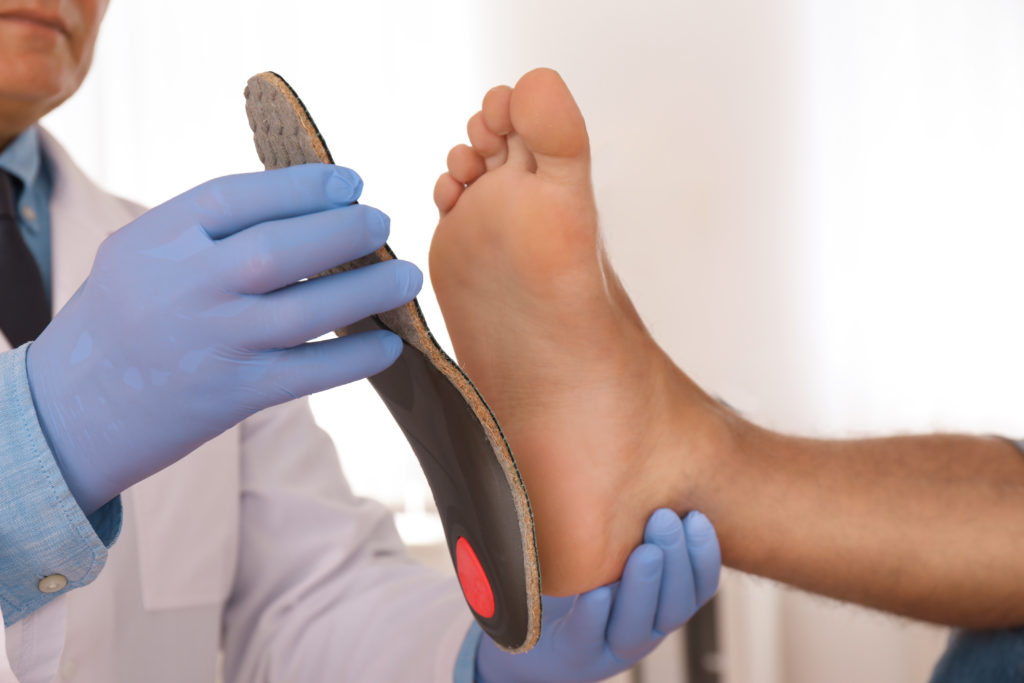Paying a visit to the podiatrist sometimes results in a recommendation for custom orthotics. Such a recommendation can be off-putting at first, but there is really nothing to worry about. Orthotics have been around for a long time. Not only that, but they can also be quite effective.
Orthotics are medical devices that have been specifically designed to provide better support and alignment of the feet, ankle, and lower extremities. When they achieve their goal, they also improve function. The result is often a complete relief of foot and ankle pain.
Note that orthotics are presented as inserts for the shoes. Some orthotics are over the counter (OTC) products designed to provide general support for minor conditions. But orthotics can also be custom made for the individual patient. Custom orthotics are the recommendation when a foot and ankle specialist believes that maximizing support and alignment is necessary.

How Orthotics Help With Pain
Several issues can cause pain in the ankles and feet. When the issues are structural, orthotics can help a great deal by reducing stress and realigning the structures of the foot. Orthotic inserts:
- Protect the Feet – Orthotic devices are purposely designed to alter the forces acting on the feet. So whether a person is standing, walking, or running, the device protects against injury. An orthotic insert can also reduce pain.
- Redistribute Pressure – The feet are under a tremendous amount of pressure whenever being used. Orthotics redistribute that pressure more evenly. Doing so reduces the overall stress on foot and angle structures.
- Align and Cushion – In addition to redistributing pressure, orthotics align the foot structures and provide an extra bit of cushioning against impact energy. This tends to improve gait and posture at the same time.
Behind the scenes, if you will, orthotic inserts provide sensory feedback to the brain. The brain attempts to accommodate the orthotics by altering how the feet do what they do. Better foot health is the result.
Different Types of Orthotics
It is important to know that there are different types of orthotics. A foot and ankle specialist would make a recommendation based on a diagnosis of the patient’s pain and discomfort. For example, the podiatrist might recommend a functional orthotic for a sports injury, over pronation, or even flat feet.
As the name implies, functional orthotics are designed to modify how the feet function. A functional orthotic is made from a rigid material. It is used to control motion and improve gait. When it works, it corrects abnormal motion.
Other types of orthotics include:
- Accommodative – Designed to relieve pressure and provide cushioning. Ideal for diabetic foot ulcers, arthritis, and other conditions.
- Semi-Rigid – Designed to provide a good balance between flexibility and support. They are recommended for flat feet, mild deformities, and sports-related issues.
- Pediatric – Pediatric orthotics are intended for children. They are adjusted over time as young patients grow.
Orthotic inserts can be designed as dress orthotics, which is to say devices that are more suitable for formal shoes. They offer a slimmer design.
A foot and ankle specialist could even recommend a custom sports orthotic, designed around an athlete and their activities of choice. Sports orthotics offer enhanced shock absorption and maximum support.
Whatever is causing your pain and discomfort, you might be a suitable candidate for an orthotic. But you will not know until you see a foot and ankle specialist. If pain and discomfort are holding you back, consider making an appointment with Beyond Podiatry. Orthotics are among the many treatments we can recommend, depending on what is behind your discomfort.
